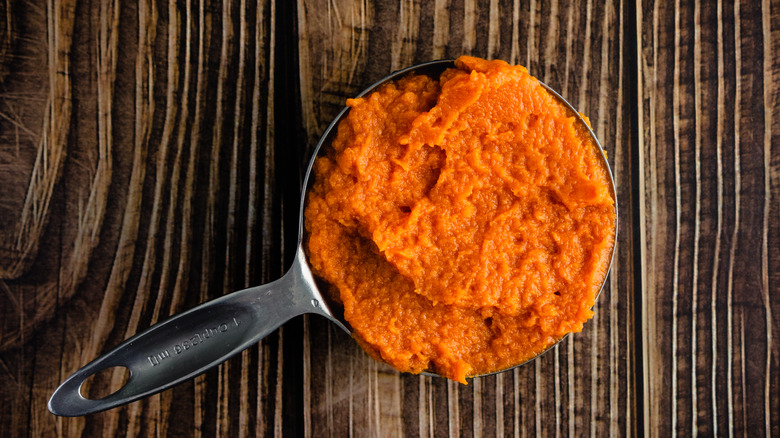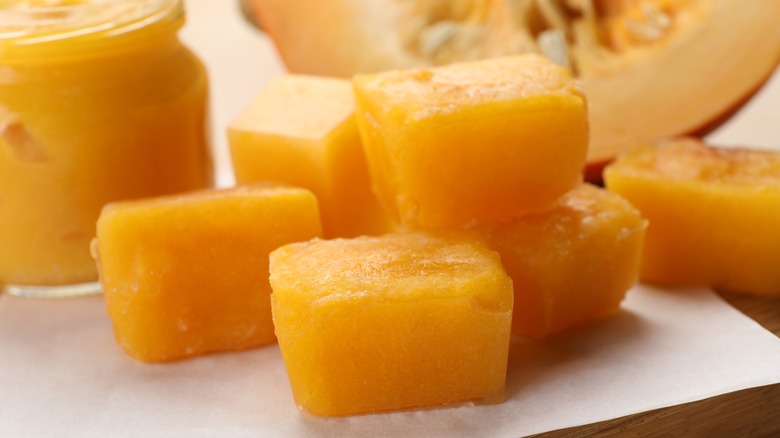Can You Freeze Canned Pumpkin And How Long Does It Last?
When it comes time to make all things pumpkin, it's a great occasion to stock your pantry with cans of the golden squash. Canned pumpkin can be the star in pies, muffins, chewy chocolate chip cookies, and even morning coffee and smoothies. But what happens when you only need a few scoops of the canned puree in a recipe and have loads leftover? Is there a way to freeze it, or is it a race against time to use it all up before it spoils?
The good news is, canned pumpkin can be frozen. In fact, whereas your leftovers will only last for a week in the refrigerator, freezing can extend its shelf-life up to a year (though it tastes best till around the four-month mark). Besides, it's very easy to freeze canned pumpkin, with several ways to do so.
The most straightforward method is to empty the contents of your can into a zip-top bag, close tight, and pop that into the freezer — it's that simple. However, you could also freeze the pumpkin in single-serve portions so that it's easier to thaw and cook later. Spoon out the squash into a muffin tin or an ice cube tray (the same easy way to freeze milk) until the puree solidifies. Then, transfer the frozen pumpkin circles or cubes into airtight bags or containers, and refreeze them till you're ready to cook your next fall-inspired recipe.
How to defrost and use frozen canned pumpkin
The most important part is to leave enough time for the frozen pumpkin to defrost properly before you cook with it. This is especially crucial if you plan to use the squash for baking, where things are very precise and using ingredients at the wrong temperature can throw off the delicate balance.
The best way to thaw pumpkin is to transfer it to the refrigerator the night before you plan to cook with it. The smaller the portions, the quicker the puree will defrost, so those cubes will thaw faster than the contents in the zip-top bag. For baking, remove the defrosted puree from the fridge beforehand and set aside an extra hour for it to come to room temperature. If you'd like to speed things up, you could always pop the squash in an airtight bag and soak that in water, or microwave it — though you should always think twice before defrosting food in the microwave.
Don't be alarmed if you see a little bit of water floating at the top. You can either stir the liquid back into the puree, or drain it off if you'd like for your squash to have a more concentrated flavor. However, if that liquid looks slimy, or you notice any discoloration and mold, it's time to toss the whole batch out. These are signs that the frozen squash is spoiled, and you'd be much better off opening a fresh can for your next pumpkin pie.


